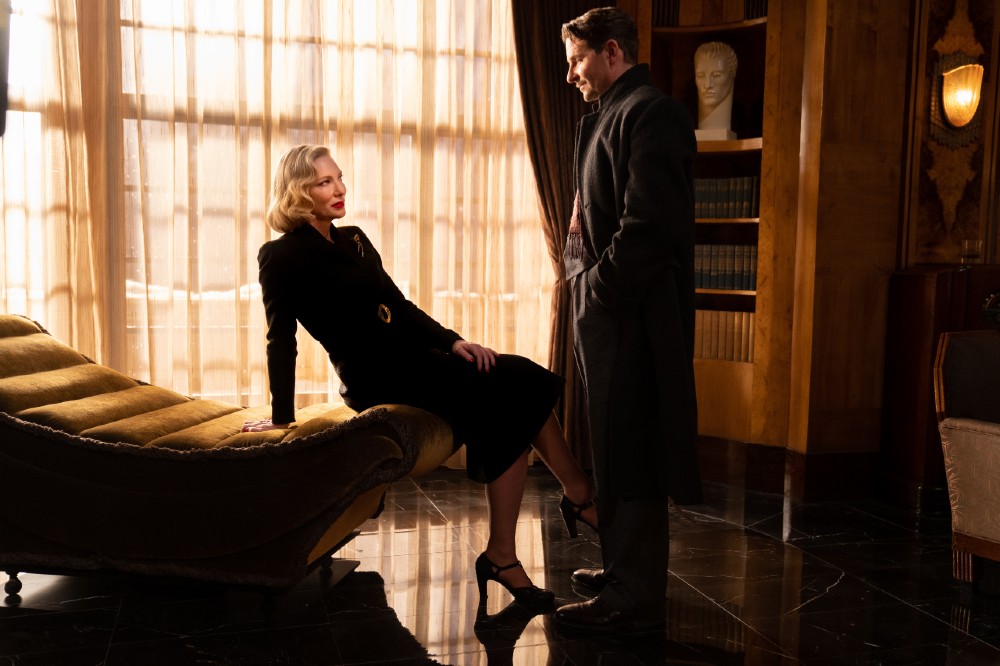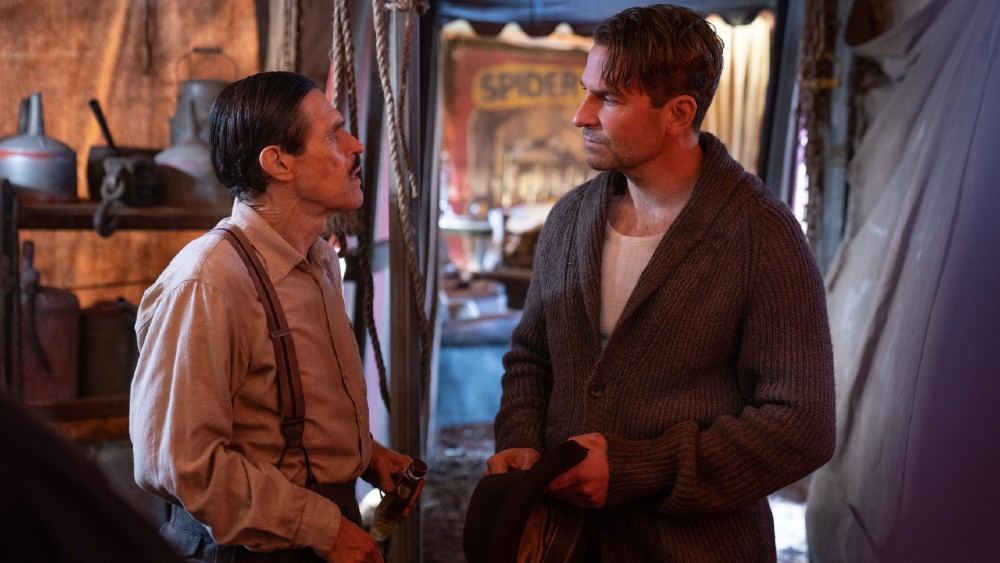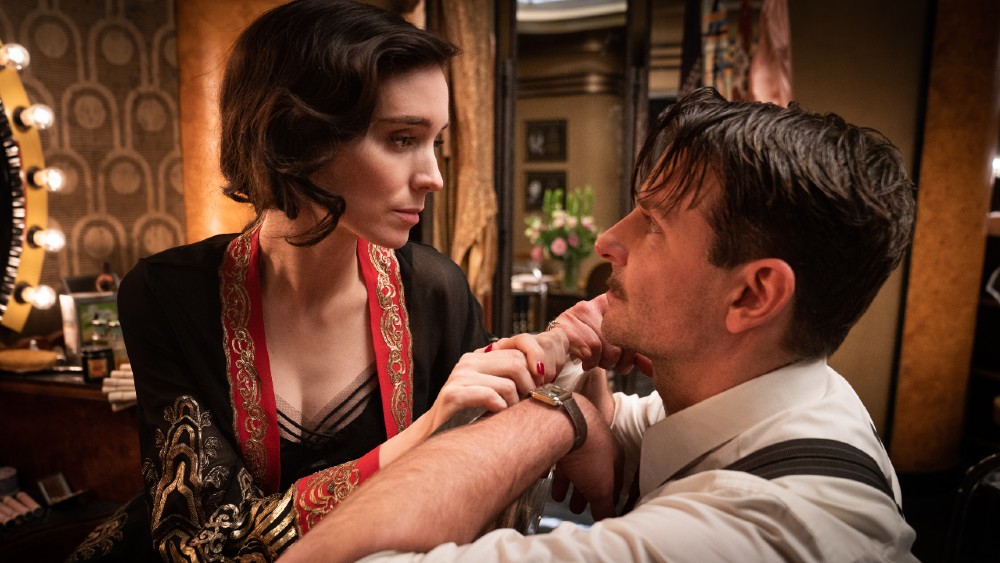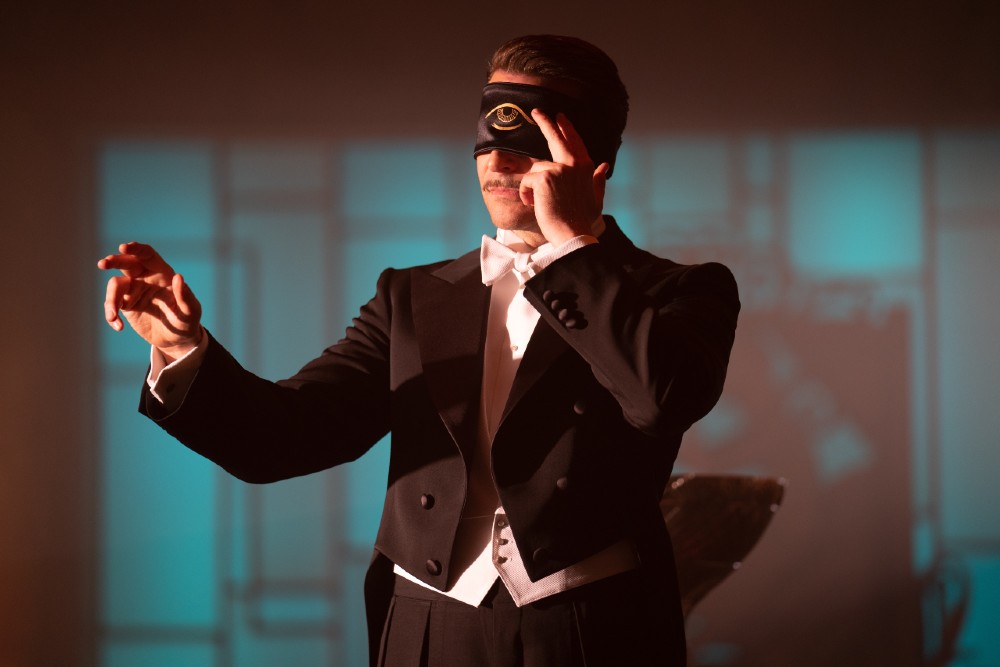
Guillermo del Toro revisits the 1946 novel Nightmare Alley, about a grifter conman, which first got adapted, film noir style, in 1947. Film noir is del Toro’s bailiwick and his own Nightmare Alley is as stylized, visually polished, and crafty as you would expect from a director with such a beautifully unique aesthetic. At the same time, del Toro’s version of the screenplay, which he adapted together with Kim Morgan, is so changed to account for the author’s own view of 2021 values as to be rendered mostly ineffective. In short, some of del Toro’s touches (the craft) greatly improve the story while others (the script) worsen it. The end result is a good film left standing where a great one should have been.
Nightmare Alley stars Bradley Cooper as Stan Carlisle, a grifter with mysterious dreams about a burning house and an old man, who eventually becomes a carny circa 1939. The carnival was such an American road institution for so much of the 20th Century that films and novels based upon the gritty, subversive nature of its performers continue to fascinate the public. Cooper’s Carlisle is fascinated at first, but he is too wily and too ambitious to be taken for a fool. He learns the ropes from the other members of the freak show, but soon looks to set out on his own.

Those members are played by a kaleidoscope of talent that includes Toni Collette as soothsayer Zeena and David Strathairn as her husband Pete, Willem Dafoe as the ringmaster behind an “Is it a man or a beast?” monstrosity, Ron Perlman doing a “strongest man on earth” impersonation, and Rooney Mara as Molly Cahill, a girl who purports to be electric. In the second act, when Carlisle moves from the soggy, dirty countryside to the big city, he also encounters Dr. Lilith Ritter (Cate Blanchett), who becomes a part of his con show, as well as Richard Jenkins as an eccentric millionaire with a past to exorcise. The entire cast is as electric as Molly, but Cooper and Blanchett, oozing with talent and chemistry between them, provide the strongest lightning rod. The former for knowing how to manipulate his aging handsomeness into a sexily appealing if deceptive being, the latter for doing all of that while also cooing and dripping with mysteriousness and allure.
As the various settings may suggest, Nightmare Alley’s story and settings present a perfect opportunity to showcase some of the visuals that one has grown to welcome from del Toro’s body of work. Tamara Deverell could very well win an Oscar for her varied and beautiful production design, from the soggy, dingy interiors of the carnival tents, to the lavish decorations in Dr. Lilith’s midtown office and the 1930s and 1940s hotel rooms and cabarets in which the film’s second act takes place. Nathan Johnson’s (Knives Out) score makes a thunderous statement in the film’s exciting second half, while Luis Sequeira’s (Shape of Water) costumes blend perfectly into the mood and lightning of the varying sets.

Given the talent that oozes from every pore of this film, it is frustrating that the script persistently gets in the way of itself and, in the process, of the movie’s reach for greatness. It is clear that del Toro wants to subvert the classic noir style with his own imprimatur, something he has done successfully in the past by adding more viscerally graphic violence to the proceedings. For Nightmare Alley, del Toro attempts subversion in two different ways, the first being the aforementioned additional touch of violence that characterizes his style, the second being the inexplicable and ultimately unpersuasive attempt to modify the motivations of a principal character (Rooney Mara’s Molly) purportedly to make a supposedly pro-feminist version of the film noir femme fatale.
The violence works because del Toro knows how to provide it in measured quantities, at surprising moments, and with memorable textures and tones. Noir films traditionally keep violence to one or maybe two shocking denouements, but del Toro and his way of portraying bodily harm enhance that experience by at least two to threefold, in effective ways. Nightmare Alley’s story is most effective when it pushes the boundary between noir and horror/action film, and a particular set of back-to-back sequences in the film’s final act are its most impressive and stunning moments.
But other ways in which del Toro apparently tried to subvert the subversive are problematic to the point of nearly sinking the otherwise beautiful artifice. What was so shocking and impactful from this story was the fact that most if not all of its protagonists are swindlers, thieves, murderers, or all of the above. Softening that to give the audience the traditional good vs. evil conceit is arguably the opposite of subversive. Worse, it deafens the boisterous tone of the movie into something much blander.
Del Toro also gets into trouble by overplaying the foreboding theme. The overwhelming majority of films telegraph more than they should, either out of sloppiness or distrust of the audience’s desire to be surprised or ability to figure out what could be coming. Seasoned movie watchers know that a shot of a particular object, a closeup of a particular person or a line that seems oddly out of place likely signals something to come later, perhaps in a twist or a revealed. Overused or overdone, this moniker can make a movie predictable and, therefore, ineffective. Nightmare Alley is, at its core, a movie about a mentalist pretending to tell the future. But the director is not a charlatan. He is not tricking or even trying to trick the audience with false flag omens. Instead, he is trying to scare them with the contemplation of doom, of the principal character’s downfall, through upside-down hangmen in tarot cards, repeated shots of deformed fetuses with a third eye in a jar, and others. While traditional movies try but at times fail to keep the suspense by not becoming too predictable, Nightmare Alley seems to revel in its insistence that it tell you how the story is going to go and eventually end, almost from the beginning. That maybe is its most subversive element of all—and, without question, its least effective.
All said, there is enough talent and sufficient coherence to this film to result in an overall enjoyable cinematic experience. Del Toro’s style cannot be quarreled with, the performances are a joy even when they’re carrying a wobbly’s script water, and some spooky scenes will stay with you. Nightmare Alley may not be a cinematic masterpiece but it may very well invade your dreams nonetheless.
Grade: B
Nightmare Alley will be released by Searchlight Pictures nationwide on Friday, Dec. 17. All pictures courtesy Searchlight.






